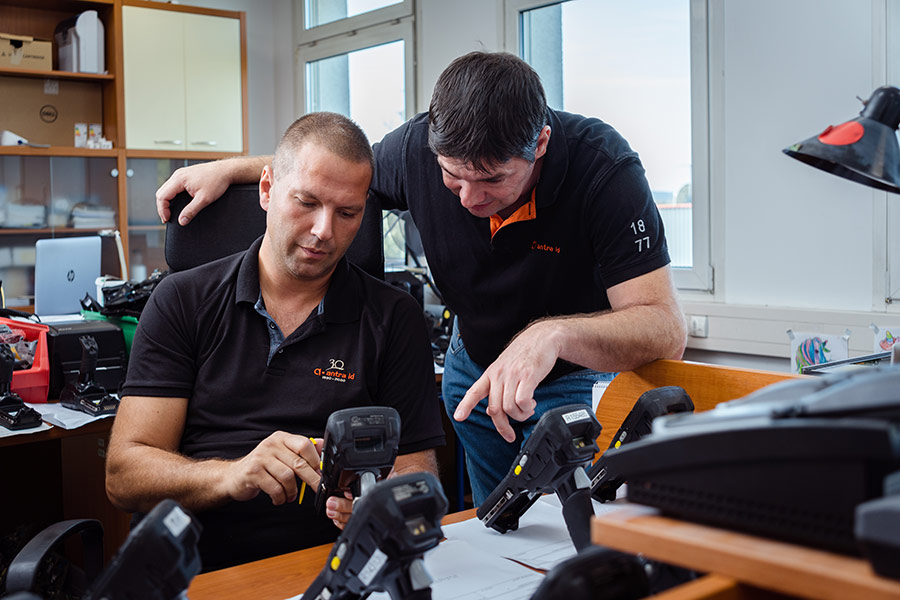In today’s fast-changing world, digitized, lean processes and the traceability of materials, goods, and devices are needed more than ever. Modern logistics solutions cover the entire supply chain and allow complete tracing of goods, raw materials, semi-finished materials, and finished products. This requires automated identification systems (Auto ID). Auto ID systems can be used efficiently in companies operating in any sector (automotive, retail and wholesale, FMCG, pharmaceutical, transport, electronics, paper, 3PL, etc.). This technology also significantly contributes to the development of a digitized, so-called smart factory, and of course, it fits naturally with the philosophy of Industry 4.0.
Antra ID Kft. of the Central European Automation Holding Group is a leader in this field and solutions. Since 1990, it has been designing, implementing, and servicing automatic identification systems. Thanks to these solutions, Antra ID Kft. customers can significantly streamline their intralogistics processes, which naturally leads to optimization of costs, productivity, human resource utilization, and, last but not least, production risk mitigation. How the implementation of warehouse digitization and management of production tools can save time and streamline internal processes in logistics and manufacturing is best visible in realized and successful projects.
At the plant of one of our largest customers and suppliers of automotive products and parts, approximately 5,000 different production and testing stations provide individual processes and operations. Because of their diversity, these production facilities are of different ages (some 15 years old), and it is necessary to maintain an extensive warehouse of spare parts and components to ensure continuous operation and maintenance. More than 100,000 spare parts have been equipped by experienced experts from Antra ID Kft. with RFID transponders. This technology has significantly reduced inventory time and capacity, for example, by lowering the person-day from 180 to the current 12. In practice, the inventory of this type of accounting solution is done by simply retrieving all the items within the inventory segment one time by the scanner and transferring them to the Mobile Data Collector (MDC), which is linked to the internal SAP system. This automation solution allows for a substantial acceleration and streamlining of downstream processes, such as simplifying the provision of spare parts to service technicians through RFID reservation. For the same customer, we have automated the order process where, when the quantity of an item on hand falls below a specified level, the order is sent automatically to the supplier, as opposed to the original situation where the demand and approval process was partly manual. Its speed, and the error rate, depended on the human factor. We have implemented this new method for 14,000 out of 25,000-part types. The aim is to have all items recorded in this way. Another example of using the automated identification system is the digitalization of production tool servicing, in particular by speeding up internal communication, saving time, and, last but not least, eliminating downtime in production. The service technician will receive a service call in the form of a text message, including key information to enable the service technician to resolve the problem of a particular device quickly and efficiently.
The operator on the line reported the fault via his PDA without interrupting his work. The implemented system then immediately sent an automatic notification to the defined service technician. Before the system was implemented, the operator had to inform his supervisor whenever he had a problem, who called a service technician. This process sometimes took 15 minutes. With the PDA and new software, we have reduced the service technician’s response time to units of minutes.
An example of intelligent service was also carried out on an assembly line in Germany, where electronics for electric vehicles and hybrids are produced. The line screws pulse converters to a cooling unit. In some operations, operators were found to have damaged the part made by an inaccurate process, resulting in reduced output capacity and increased costs due to shortages. It was one of the most common problems on the line. The Antra ID Kft. equipped the screwdriver with a shock sensor that identifies any problems within the operation and provides immediate feedback to the operator, monitors its performance, and stores the relevant control data into the parent systems for further analysis for the needs of quality management systems. Asset inventory remains the most common use of RFID technology, which can be logistically and capacity-neutral in several more important production sites. One worker managed the inventory in four hours when individual devices and their monitored components were equipped with RFID tags in a factory with about 2,500 monitored machines and devices. Machinery and equipment are provided with RFID transponders that communicate with the RFID by a small mobile truck that corresponds with the inventory database, compares it with reality, and automatically records deviations. This system saves about 95 percent of capacity compared to the previous manual inventory. Apart from speeding up and streamlining the whole process, there is a drastic reduction in the error rate of the solution from Antra ID Kft. Kft. can be implemented in different situations and for various industries, precisely tailored to the customer and including service and after-sales support.



